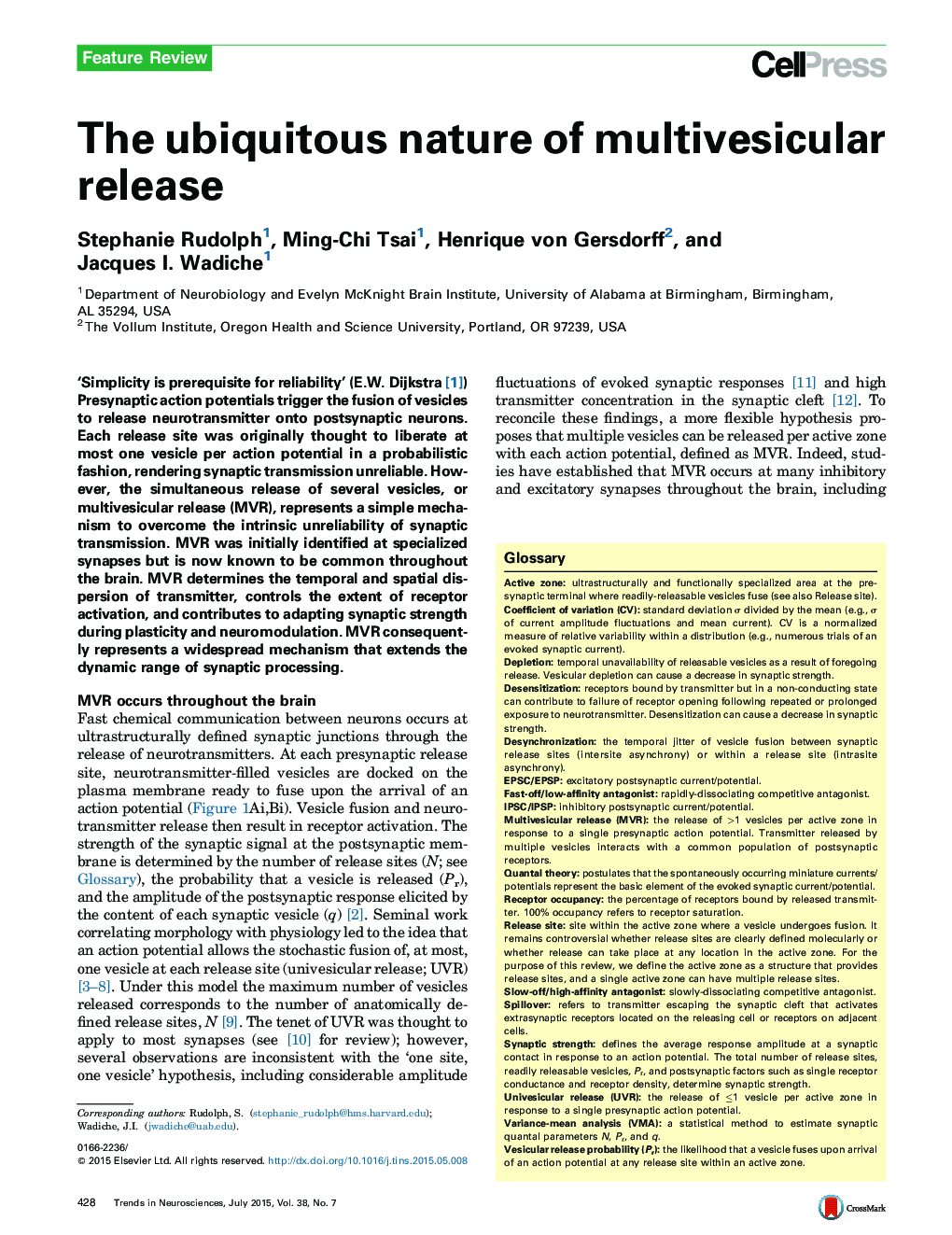| Article ID | Journal | Published Year | Pages | File Type |
|---|---|---|---|---|
| 4354195 | Trends in Neurosciences | 2015 | 11 Pages |
•Multivesicular release (MVR) enhances the reliability of synaptic transmission throughout the brain.•MVR controls local synaptic integration and network function.•Modulation of MVR on various timescales increases the dynamic range of synapses.
‘Simplicity is prerequisite for reliability’ (E.W. Dijkstra [1])Presynaptic action potentials trigger the fusion of vesicles to release neurotransmitter onto postsynaptic neurons. Each release site was originally thought to liberate at most one vesicle per action potential in a probabilistic fashion, rendering synaptic transmission unreliable. However, the simultaneous release of several vesicles, or multivesicular release (MVR), represents a simple mechanism to overcome the intrinsic unreliability of synaptic transmission. MVR was initially identified at specialized synapses but is now known to be common throughout the brain. MVR determines the temporal and spatial dispersion of transmitter, controls the extent of receptor activation, and contributes to adapting synaptic strength during plasticity and neuromodulation. MVR consequently represents a widespread mechanism that extends the dynamic range of synaptic processing.
